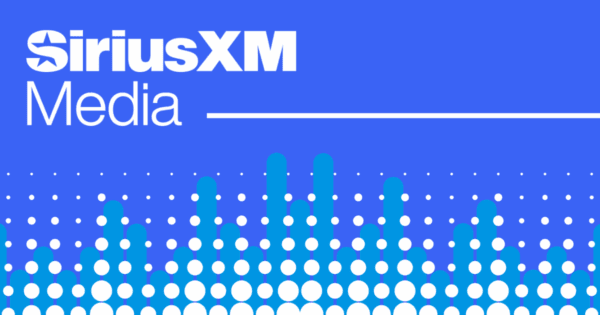Earlier this year, Spotify held an event in New York City called Spotify Advance. At this event, they announced significant developments to their ad buying, ad creation, and impact measurement across their advertising platform. Many of these changes are going to make Spotify a more likely candidate for advertising by companies that want more control and audience choices, better visibility of results that go far past brand lift metrics, and overall easier planning and deployment of conversion-focused campaigns.
Spotify is easily one of the top major players in digital media both globally and in the United States. The platform boasts about 675 million monthly users as of the latest count, spanning approximately 180 countries. This is not an app that’s done growing either; that 675 million represents about a 10% increase year over year. Of those users, about 92% use the app daily, creating substantial stickiness, loyalty, and receptivity to both the app and the brand.
With that scale and being the number one player in the market – the biggest music app out there with audiobooks, podcasts, music, and partnerships with artists – one would be forgiven for assuming that advertising on Spotify is really only for larger brands, something aimed at improving metrics like brand recall, brand lift, and other top-of-funnel buzz metrics.
However, with this latest round of changes, Spotify is making a deliberate push to make advertising on its platform more accessible to smaller and medium-sized advertisers, and more of an easy lift for anyone who wants to test the waters.
Breaking Down The Usual Obstacles
Of course, these barriers to entry have been real obstacles in the past. It can sometimes be difficult to set up a campaign on such a large platform, create the necessary creative assets (which in this case would be audio creative that most companies don’t have readily available), deploy campaigns quickly, and then measure tangible results.
For advertisers wanting more concrete outcomes, like app installs or website visits, Spotify now offers what’s called the Spotify Pixel. You can set this up to track people’s visits and actions when they hear one of your ads, providing attribution that doesn’t pause their listening experience.
What’s Actually New?
If you’ve been living under a rock for the past several holiday seasons when everybody’s Spotify Wrapped gets rolled out as predictably as Mariah Carey’s “All I Want for Christmas Is You,” you know Spotify has had ads for years. But what is genuinely new represents a fundamental shift and an evening of the playing field.
It’s now much easier to launch your campaign, develop creative without significant challenges, and these reduced friction points are mirrored by more comprehensive reporting that shows how much impact advertising is having on your bottom line.
Better Ways To Target – Across All Three Ad Formats
One of the most significant improvements is much better granular targeting capability, which works differently across each of Spotify’s three major advertising sections: video ads, audio ads (the flagship offering that most people think of), and display ads. There’s also podcast advertising, which you can target on a standalone basis if you want an even more engaged audience than the typical music listener.
Spotify emphasizes that its ads are delivered when people are in a highly receptive state. There’s no swiping, no scrolling, no skipping… just listening. They maintain high engagement rates, with testing showing that about 93% of the engagement happening with whatever content users are consuming transfers over to the ads. People’s attention doesn’t just glaze over as they might skip past a sponsored story on Instagram.
Audio Ads: The Flagship Experience
Audio ads remain the cornerstone offering and have been developed with pretty granular targeting tools to help advertisers reach their audiences based on what the vibe really is. This ranges from general demographics like age, gender, language, and geographic targeting to more specific listening behaviors like preferred music genres or podcast categories.
When creating campaigns, advertisers have flexibility to choose whether audio ads will run only on music content, only on podcasts, or a mix of both, allowing message delivery across all audio content types.
One of the key benefits is that you can show ads between songs and accompany them with a call-to-action or link that won’t interrupt the user’s experience because they continue listening. This is fundamentally different from any social media platform, even the super popular ones like TikTok or Instagram. Interacting with your brand won’t take users out of whatever they were already doing, which is why about 70% of users polled by Spotify said they are receptive to ads within their listening experience.
Display Ads: The Easiest Entry Point
Display ads are probably the simplest way for advertisers to make an incursion into Spotify advertising. They’re straightforward with specific placements: when listeners enter the browser search screen and within the player view.
These ads are unobtrusive, they don’t interrupt the user experience, and they’re linkable, allowing navigation to your desired destination without playback interruption. For businesses testing Spotify for the first time, display ads offer a low-risk way to understand platform performance before investing in audio creative.
Video Ads: Full-Screen Impact with Options
Video ads represent a slightly bigger obstacle for most advertisers but offer compelling engagement opportunities. Options range from full-screen takeovers to less interruptive formats that blend with native content in the player view.
The most engaging option might be the opt-in video ads that appear within the now-playing view (NPV). These appear when the app is in view, and people can choose to watch them through interaction, creating a self-selecting highly engaged audience.
Easier, Faster Creative Creation
Not everybody has video ads or voiceover content readily available, so Spotify has developed something of an in-house creative studio. They can pair advertisers with talent or, in some cases, help with generative AI ads.
AI voiceover and generative AI ads are currently available only for the US and Canada through Spotify Ads Manager, but they represent a breakthrough in ease of asset production. Advertisers can create scripts through a series of prompts and then generate voiceovers from those scripts, dramatically lowering the creative production hurdle that has historically kept smaller advertisers away from audio advertising.
This creative support system demonstrates Spotify’s commitment to making their platform genuinely easier to on-ramp rather than just claiming to be more welcoming to smaller budgets.
Solutions for That Focus On Performance Marketing
Spotify has improved key aspects of Ads Manager with new lower-funnel objectives that go far past impressions and general brand awareness. These are brass-tacks metrics focused on tangible business outcomes.
For businesses advertising mobile apps, there are app install objectives. For advertisers wanting website traffic, there’s a website traffic objective that optimizes campaigns toward people most likely to visit your site. Again, these interactions don’t pause the user’s listening experience, maintaining the platform’s core value proposition of non-interruptive advertising.
Tracking & Attribution Improvements
One area that has seen significant improvement is first-party measurement capabilities. Spotify has enhanced the Spotify Pixel within Ads Manager, making it possible to track more meaningful actions, which we will cover further down. The platform has also updated Spotify Brand Lift, their first-party measurement tool that helps advertisers understand how Spotify campaigns impact brand metrics like recall and consideration. This tool allows advertisers to target users who have been shown their ads with up to 3 questions regarding their recall and reaction to the ads.
They’ve also improved third-party tag integration to offer better insight and transparency into results. This measurement evolution addresses one of the traditional challenges in audio advertising: proving concrete business impact beyond brand awareness metrics.
The Strategic Opportunity
These updates represent more than incremental improvements; they signal Spotify’s intention to compete directly with performance marketing platforms while maintaining the unique advantages of audio advertising. The combination of massive scale (675 million users), high engagement (92% daily usage), and reduced friction for campaign creation and measurement creates compelling opportunities for advertisers who have previously found audio advertising daunting.
For smaller and medium-sized businesses, this evolution means access to a premium advertising environment without the traditional barriers of creative production costs or complex campaign setup. The AI-powered creative tools, improved targeting granularity, and conversion tracking capabilities put sophisticated audio advertising within reach of businesses that previously couldn’t justify the investment.
Making Creatives & Keeping Them Fresh
Despite Spotify’s AI voiceover and scripting tools and the creative support they offer, audio advertising still requires a different creative mindset than visual advertising. The 15-30 second audio format demands concise scripting, catchy hooks, and clear calls-to-action; all without any visual cues. Even with AI assistance, many advertisers will need time and testing to understand what resonates in audio format versus their existing visual creative strategies.
The risk of poor creative performance is amplified in audio because there’s no visual fallback. If your audio ad doesn’t immediately grab attention or clearly communicate value, listeners will simply tune out mentally while waiting for their music to resume.
Additionally, audio content can become stale more quickly than visual content because listeners encounter the same ads repeatedly across their regular listening sessions. The double whammy of pros like high user engagement (92% daily usage) and limited skipping options can quickly turn into the con of ad fatigue setting in more rapidly than display ads people can ignore easily. Advertisers will need agile creative production cadence, and will need to dedicate attention to what works where and when. AI tools can help with this, but they don’t entirely make the problem go away.
Even in instances where AI would be helpful in quick cycling creative, overuse of this tool would lead an advertiser to miss out on one of the things that makes digital audio so effective – tone. Cadence and tone and inflection all
Premium Platform – Premium Price
While Spotify has made their platform easier to adopt for smaller marketers, it remains a premium advertising environment. Cost-per-thousand (CPM) rates still exceed those of many digital advertising channels, particularly for high-value audiences. Small businesses testing the platform need realistic budget expectations; the same spend that might generate significant traffic on Meta or Google could yield more limited reach on Spotify.
Hard to Track
Audio advertising attribution faces inherent challenges that Spotify’s pixel tracking can only partially address. Unlike visual ads where users can immediately click through, audio ads rely on listeners remembering your brand and taking action later. This delayed response pattern can make attribution murky, particularly for businesses with longer consideration cycles or multiple touchpoints in their customer journey.
Also, while Spotify has improved tracking capabilities, measuring the full impact of audio advertising remains more complex than traditional digital channels. Brand lift studies and attribution modeling require longer measurement periods and more sophisticated analysis than typical click-through-rate-focused campaigns. Smaller advertisers might lack the analytics infrastructure to fully capitalize on Spotify’s measurement improvements.
The Bottom Line
Spotify’s transformation of their advertising platform reflects broader changes in digital marketing where performance metrics increasingly matter more than vanity metrics. By making their platform easier to use while maintaining the unique advantages of audio advertising(high engagement, non-interruptive formats, and receptive audiences), Spotify is positioning itself as a viable alternative to traditional digital advertising channels.
The combination of scale, engagement, and now accessibility makes Spotify advertising worth serious consideration for businesses of all sizes. The platform’s focus on measurable outcomes, creative support, and streamlined campaign management removes traditional barriers while preserving the unique advantages that make audio advertising effective.
For marketers looking to diversify their media mix with a channel that offers both reach and engagement, Spotify’s evolved advertising platform presents an opportunity to reach audiences during highly engaged moments without the friction and ad fatigue associated with traditional digital channels. Whether you’d like to test Spotify advertising as a proof of concept for your advertising mix or want to dive in completely with a fully fledged campaign, give us a call. Online Optimism can help you design, deploy and develop the digital audio campaign your business needs.





